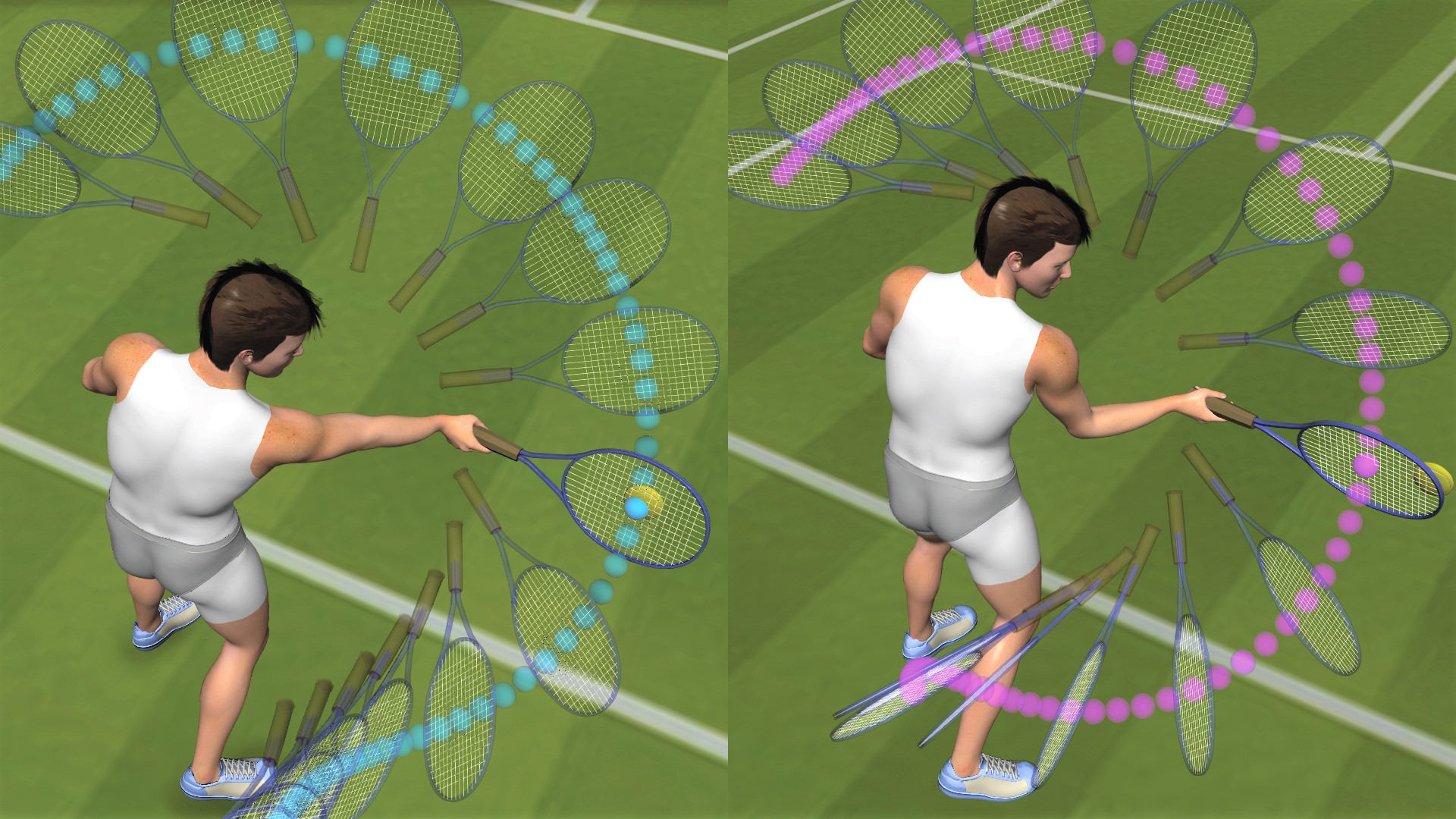Chicken Wing Syndrome
When one is nervous, one tends to tuck the elbows into one's torso. That is classic anxious body language. It is not surprising then, that as we get tight in tennis, we tend to tuck in the hitting elbow - keep it close to the body - during some or all of the stroke. It may "feel" like shortening of the lever arm gives us more leverage and therefore more control over the racket, but actually, the opposite is true. Chicken-winging leads to a dramatic loss of power, spin, control and a profound loss of the beauty of the stroke itself. Because it pits the elbow directly against the incoming missile it can lead to all kind of damage to the elbow, forearm and wrist including, but not confined to, tendonosis, muscle tears, osteoarthritis, and tennis elbow. Besides, it creates a short-armed swing that makes one look like a juvenile Tyrannosaurus.
The Chicken Wing Syndrome has to be the simplest and therefore the dumbest syndrome that has ever dragged me down to the depths of tennis hell. The fault is obvious to sufferer and observer alike, and the solution is trivial. Chicken winging is also ubiquitous. I have seen it cropping up amongst very talented players, even professionals, but, in them, only as a transitory, self-limited phenomenon, not as the pernicious, soul-crushing disease that spawned in me a seemingly endless series of slumps. So why did it take me 50 years to identify it? The answer is D - all of the above. The syndrome is everywhere, so it does not stand out. It is pathetically simple, so it does not challenge or excite the intellect. And it is trivial to fix, so it often repairs itself before one has time to recognize it. Indeed, once I zeroed in on this malady, I found it simple to diagnose, easy to understand and trivial to fix and prevent.
The basic pathophysiology of Chicken Wing Syndrome is keeping one's elbow too close to the body through the moment of contact. That's it. Nothing more to it than that. Yet this fault can disrupt every groundstroke, every volley, the serve, the overhead, and even the drop shot. It results in spectacular mishits - such as driving your topspin forehand into the ceiling, loss of power, loss of control, imbalance and a sense of complete discombobulation and dyscoordination. It can wreck your elbow, forearm or wrist. It is the most destructive pure stroking fault I have encountered in 50 years of research.
The root cause of pulling one's elbows into the body during a stroke is mysterious, but I believe that an important factor is a paradoxical misconception that doing so increases both control and power. When the arm is fully extended at the moment of contact one may feel 'weak,' especially in and around the shoulder joint. Indeed, with the arm fully extended away from the body, the leverage applied through the shoulder is enormous. If you doubt that, try performing the 'iron cross' on the rings. If one is trying to hit the ball with power, either to generate pace or to enforce control over the racket face, tucking the elbow into one's ribs provides the illusion of improving leverage and control.
Actually, static leverage is increased, but in stroking we are only concerned with dynamic leverage; the leverge that allows us to most efficiently generate the racket head speed. To maximize racket head speed, the most efficient technique is to start with a short lever arm and increase it's length as the racket head approaches the ball. Since the lever arm is the hitting arm, we increase its 'length' by extending the joints at the shoulder, elbow, and wrist, i.e. 'reaching out' for the ball.

